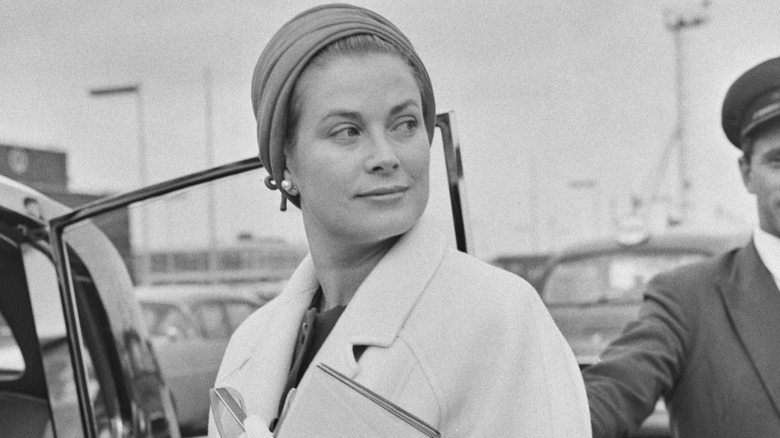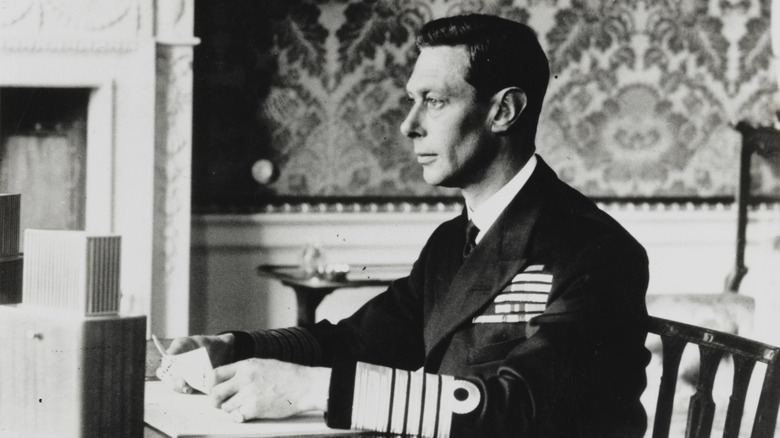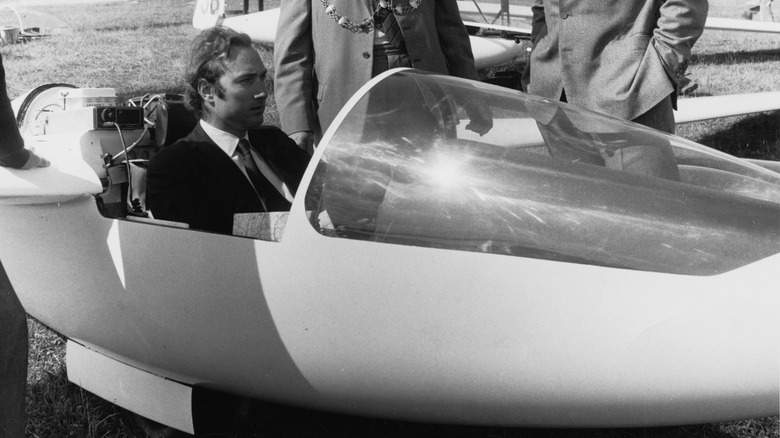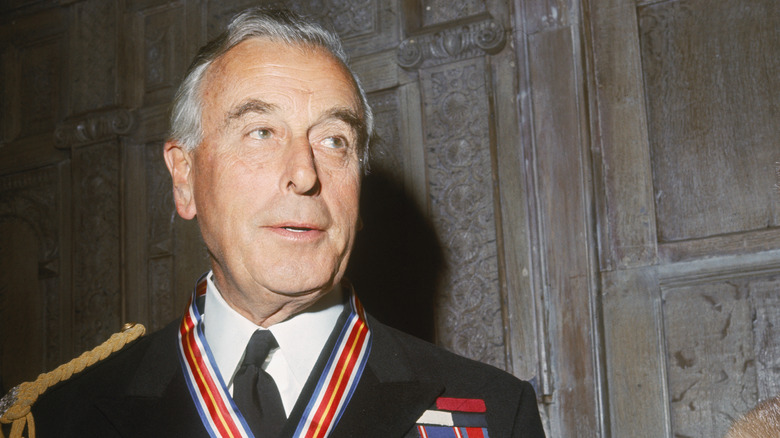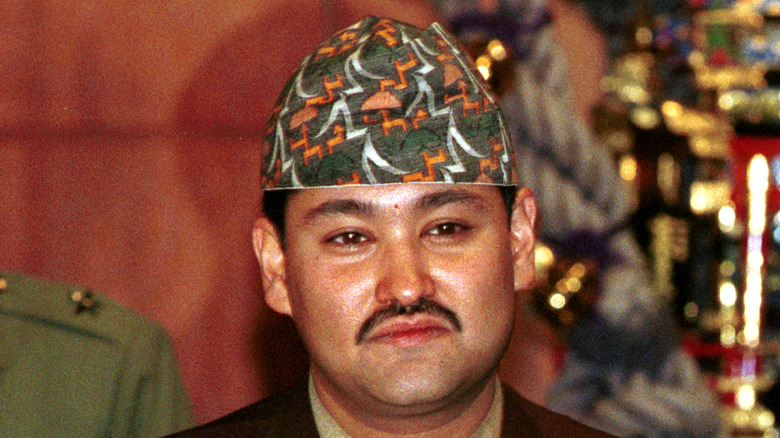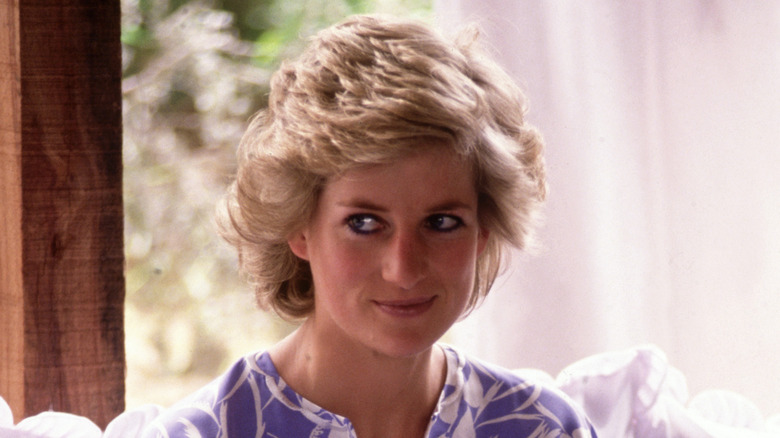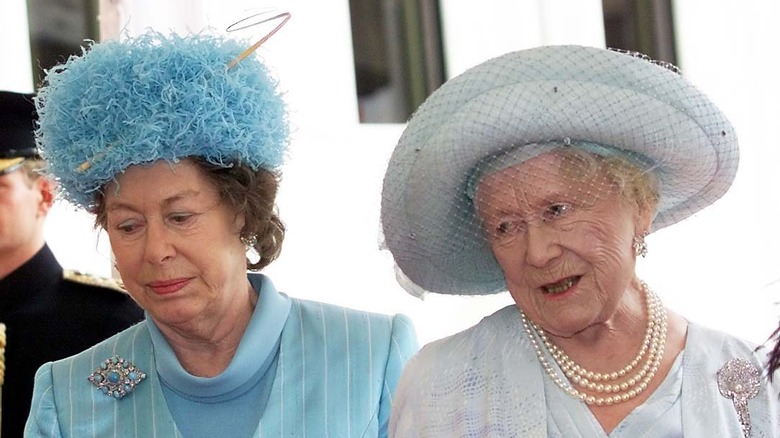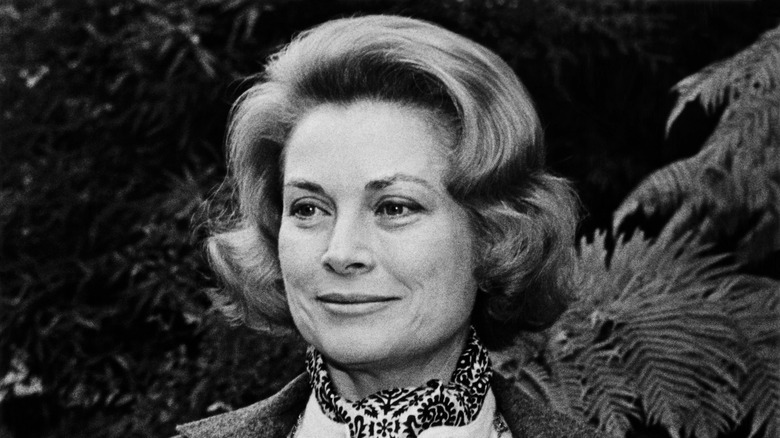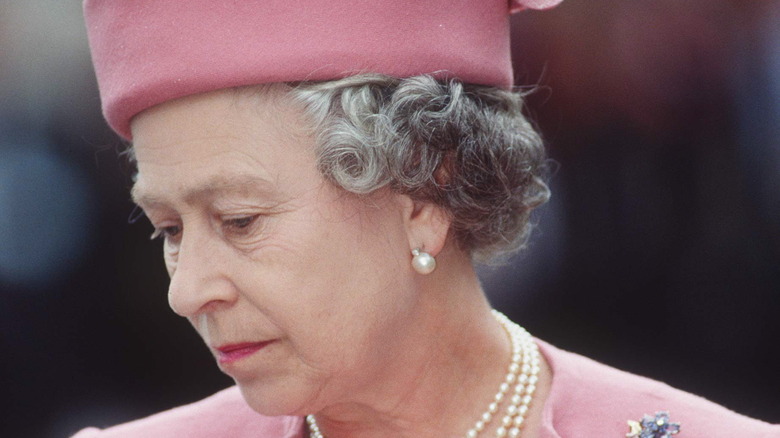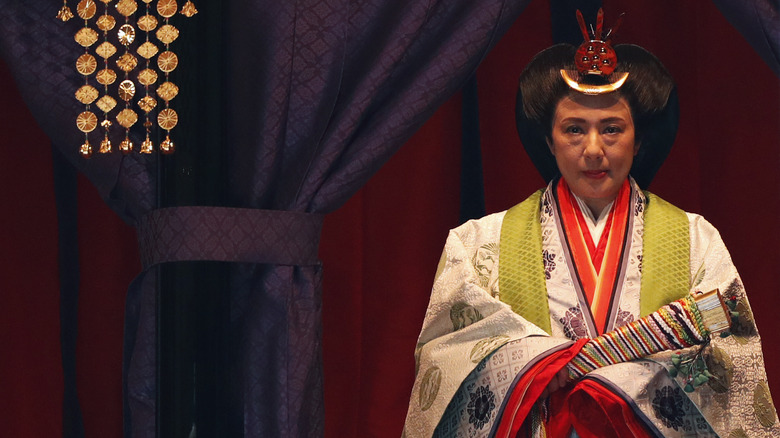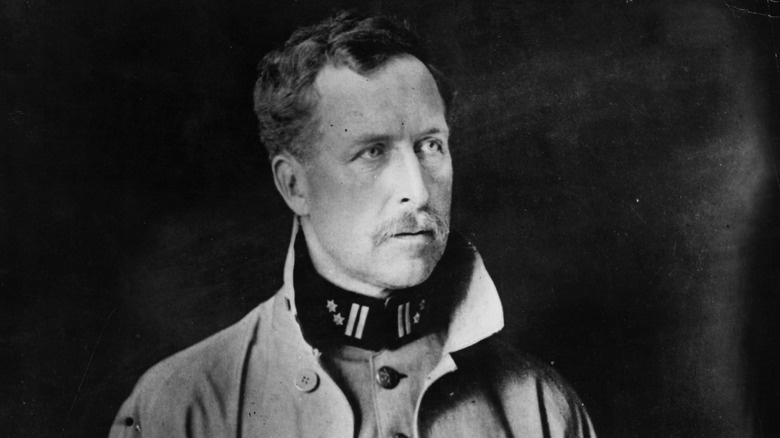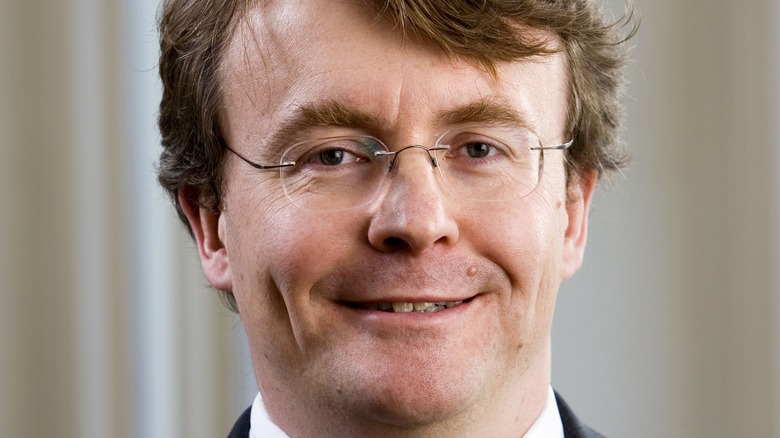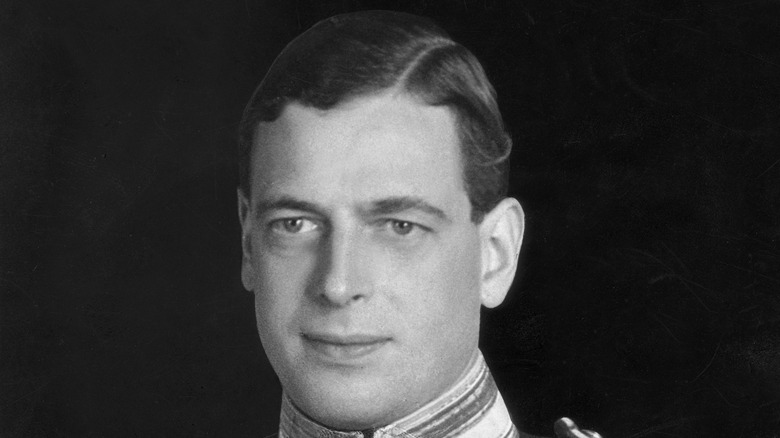12 Tragedies That Completely Shook Royal Families Around The World
While the British royal family tends to use the mantra "never complain, never explain" as a PR strategy, tragedy sometimes strikes and overrides the family's ability to maintain its opaque presence. This is true of other royals worldwide as well.
Despite being cloaked in titles, wealth, and access, royals from Belgium to Japan have had to deal with the relentless hand of fate — some of which even changed their lines of succession. In the U.K. in the late '90s, Princess Diana's death shook the royal family and the nation, while an unthinkable event less than four years later struck multiple members of Nepal's royal family.
Many royals died far too young, and plenty of others dealt with major catastrophes. Rank and privilege obviously do not insulate royalty from devastating accidents, early death, or near-death experiences. No, the following royal families know all too well the pain of unexpected loss and tragedy.
The death of King George VI
King George VI, father to the late Queen Elizabeth II and Princess Margaret, was just 56 when he died of coronary thrombosis. He had been diagnosed with lung cancer and had a lung surgically removed; however, he never fully recovered from the operation and died on February 6, 1952.
King George VI had a famously unconventional relationship with the crown and his own kingship. His brother, King Edward VIII, abdicated the throne in 1936, leaving the monarchy to George, who was shy, suffered from a stutter, and allegedly never aspired to rule. On top of that, his reign was extraordinarily stressful, as he guided England through the World Wars and the hardships that followed for England after being decimated by a campaign of German bombings throughout the country. Countless lives were lost. In fact, according to the British royal family, while George technically died of coronary thrombosis, it was the stress of these historical situations that took a toll on his health.
King George VI's death was particularly painful for his two daughters. Then-Princess Elizabeth was only 25 when she unexpectedly became queen. She and her husband, Prince Philip, departed for a tour of the Commonwealth on behalf of her father and were in Kenya when she got news of the king's death. The last time she saw her father, he was at the London Airport to bid farewell to her and Philip. She returned as queen to bury the beloved king.
The plane crash that killed Prince William of Gloucester
Before there was the Prince William we know today, son of Princess Diana and husband to Princess Catherine, there was another Prince William who was a beloved figure in the royal family. Prince William of Gloucester was Queen Elizabeth II's cousin. He was athletic, adventurous, attractive, and charming. Prince William was the eldest son of Prince Henry, Duke of Gloucester, and Lady Alice Montagu-Douglas-Scott. His father, Prince Henry, King George VI's younger brother. William was actually a page boy at then-Princess Elizabeth and Prince Philip's wedding, and he also attended Elizabeth's coronation.
William was educated in England and later studied for a year at Stanford University in California. Following this, William worked in Tokyo, Japan, in the British Embassy. It was here he met Zsuzsi Starkloff, a model and flight attendant who had been divorced twice and had two children. Because of this, the royal family didn't approve of their relationship. William ended up returning to England without marrying Starkloff to take care of family duties when his father became ill.
William, being an adventurer and a pilot, decided to participate in the Goodyear International Air Trophy in 1972. His mother was in the audience. The wing of his plane hit a tree, causing the plane to spin out of control, crash, and become engulfed in flames. The burns William sustained were so severe that his body was later identified through dental records. He was only 30 years old.
Lord Louis Mountbatten's tragic assassination
As depicted in Netflix's "The Crown," the death of Lord Louis Mountbatten hit the British royal family as a devastating shock. He was assassinated by the Irish Republican Army in 1979 as the group was seeking independence from British rule. Lord Mountbatten, the cousin of Queen Elizabeth II, was very close to the then-Prince Charles, offering guidance to the young prince on matters of the heart and the journey to manhood. Mountbatten was an officer in the British Navy, and he later held the position of Viceroy of India. Because of his illustrious position within the British royal family, the IRA had threatened Mountbatten with assassination before, to which he reportedly replied, "Who the hell would want to kill an old man anyway?"
Lord Mountbatten and his family frequently vacationed at Classiebawn Castle, situated on the west coast of Ireland. They used his boat, Shadow V, to fish and catch lobster, and it was on this vessel that the IRA placed a bomb in the engine hatch in the middle of the night on August 27, 1979. The bomb went off, wounding several family members of Mountbatten and killing 79-year-old Mountbatten, as well as his grandson, 14-year-old Nicholas Knatchbull, and a young boatman named Paul Maxwell. Mountbatten's son-in-law's mother, Dowager Lady Brabourne, was severely injured in the explosion and died a day later. Mountbatten's funeral was held on September 5, 1979, at Westminster Abbey.
The massacre within Nepal's royal family
Considered one of the worst royal massacres in history, Crown Prince Dipendra Bir Bikram Shah of Nepal killed nine people at a family gathering on June 1, 2001. The prince was drunk when he shot multiple members of his family, including his father, the king of Nepal. The prince then shot himself, but he did not die immediately. With the death of his father, Dipendra became king; however, his reign lasted just a few hours. After being pronounced brain dead, his uncle, Gyanendra Bir Bikram Shah Dev, became king.
Dipendra's motivation for the killing wasn't totally clear. His parents were unsupportive of his relationship with a woman named Devyani Rana, having not approved of his wish to marry her and allegedly threatening to disinherit him if he did. However, Dipendra was also reportedly upset about his father's plans to turn Nepal into a constitutional monarchy. Dipendra, reports say, felt that his father was relinquishing the crown's power.
Whatever the case was for upsetting Dipendra, he killed both of his parents that night, as well as his younger siblings. Lieutenant General Vivek Kumar Shah, who served as a longtime aide-de-camp at the royal palace in Nepal, later told The World, "[Dipendra] was kind of a dual character. Outside, he was very much gentle, very much liked by everyone." However, he continued, saying, "But inside, from the beginning — probably, he didn't get the love he should have as a child."
Princess Diana's devastating death
Princess Diana's death was a tragedy that shook not just the British royal family but the whole world. In August 1997, the beloved princess was killed in a car accident in Paris' Pont de l'Alma tunnel. Her boyfriend, Dodi Al Fayed, and the driver of the vehicle also died in the wreck. Diana was only 36 years old. Her death ruptured the lives of Princes William and Harry and pushed the royal family into upheaval unlike any it had experienced before.
Queen Elizabeth II didn't return to London immediately following Diana's death; instead, the royal family stayed at their Balmoral estate in Scotland to comfort the boys. However, the country interpreted the queen's distance as indifference. "If you're looking for the moment when the British monarchy was most severely challenged and found itself most at odds with public opinion, it has to be following the death of Diana and the perception that the Queen and the royal family didn't care," British historian Robert Lacey told Time on the 25th anniversary of Diana's death.
To make matters more complicated, Dodi's father, Mohamed al-Fayed, claimed that the royal family was complicit in Diana and Dodi's deaths, prompting conspiracy theories and unrest around the tragic passings. His conspiracies led to an inquest, but Mohamed's theories proved to be unfounded.
Princess Margaret and the Queen Mother's back-to-back deaths
Princess Margaret, Queen Elizabeth II's only sibling, died on February 9, 2002, at the age of 71 after a series of strokes. Margaret had suffered from health issues for years. In 1985, she had part of a lung removed after a lifetime of heavy smoking. In the late '90s, she badly burned her feet in a bath while in Mustique, an island in Saint Vincent and the Grenadines, and the injuries impacted her mobility in the years leading up to her death.
Princess Margaret's funeral was a private affair, held at St. George's Chapel in Windsor Castle on February 15, 2002. She was cremated in order to be laid to rest in a vault that held the remains of her father, King George VI. The queen, never one to show emotion, did appear to cry at the funeral.
Tragically, the Queen Mother died shortly after her youngest daughter on March 30, 2002. She attended Margaret's funeral despite her poor health. As Prince Harry wrote in "Spare," "Granny tried to talk Gan-Gan out of attending the funeral. But Gan-Gan dragged herself out of her sickbed, and shortly after that day took a bad fall." The Queen Mother never fully recovered, dying several weeks later at the age of 101. Losing both her sister and her mother in such a short period of time was undoubtedly trying for the queen.
Grace Kelly's car crash and subsequent death
Princess Grace of Monaco died tragically on September 14, 1982. Formerly Grace Kelly, an esteemed actor, married Prince Rainier of Monaco in 1956. Together, they welcomed three children: Caroline, Albert, and Stephanie.
On September 13, 1982, Grace was driving with her daughter, Stephanie, when she had a stroke. Grace was navigating particularly steep terrain at the time and was unable to control the car, resulting in the vehicle careening off of a cliff. Both Grace and Stephanie were rushed to hospital. Fifty-two-year-old Grace died the next day from a brain hemorrhage, while 17-year-old Stephanie suffered a concussion and a fractured vertebra but was able to recover.
Author Jeffrey Robinson later spoke to Grace's daughters about the tragic incident, and Caroline, Grace's eldest daughter, told Robinson what Stephanie had relayed to her. ”Stephanie told me, 'Mommy kept saying, ' I can't stop. The brakes don't work. I can't stop,'" Robinson revealed to the Chicago Tribune. Grace may have perceived this to be the case either because she was unable to use her legs or because she accidentally pressed the gas pedal instead of the brake. Stephanie pulled the hand brake in an attempt to stop the car, but it unfortunately was not enough. Princess Grace's funeral was held at the Cathedral of Monaco, and she was laid to rest in the tomb below the cathedral.
A string of tragedies within the British royal family
Some years are better than others, and for the British royal family, particularly for the late Queen Elizabeth II, 1992 was a heck of a year. On November 24, 1992, the queen gave a speech at Guildhall to commemorate her 40th anniversary of her accession to the throne, and she got candid with the crowd. "1992 is not a year on which I shall look back with undiluted pleasure," the queen began, according to the royal family's website. "In the words of one of my more sympathetic correspondents, it has turned out to be an 'Annus Horribilis.'"
The year was just the beginning of scandals that would surround Prince Andrew for decades to come. In March, he and his then-wife, Sarah Ferguson, announced their separation. In April, Princess Anne got a divorce from Mark Phillips. Rumors were already widely circulating that Anne was in a relationship with the queen's equerry Timothy Laurence. The media was in a frenzy about the royals, and the family was constantly in tabloid publications. The crowing glory of this came in June 1992, when Andrew Morton published his biography, "Diana: Her True Story," which spread Diana's ongoing unhappiness as part of the royal family, particularly her relationship with Charles. In the fall, part of Windsor Castle burned in a fire. The year ended with Princess Diana and then-Prince Charles separating, increasing tabloid fodder. A bad year for the royals, indeed.
Empress Masako of Japan's withdrawal from public life
Born Masako Owada, Japan's Empress Masako had an extraordinary career as a diplomat. Masako was educated at Harvard University and later Oxford University and became fluent in English, French, and German in addition to Japanese. In October 1986, she met then-Prince Naruhito. She and the prince courted for six years, with Naruhito proposing three times before Masako finally accepted. A significant part of her reluctance to marry the prince was the loss of her career in exchange for the constricted imperial life that the nuptials would bring. Nevertheless, they married in 1993. Masako revealed in a later press conference, "His Highness told me that 'you may have many worries and anxieties about entering the imperial house, but I will do everything in my power to protect you as long as I live'" (via Tokyo Weekender).
Still, Masako struggled in her new role. She developed what the Imperial Household Agency called an "adjustment disorder," according to the BBC, and the stress of her royal position forced her to withdraw from public-facing duties for over 10 years. Her travel was extremely restricted, and she admitted that this caused her considerable grief. Sadly, Masako suffered a miscarriage in 1999. Although there was pressure for her to have a male heir, she and her husband would later welcome their only child, daughter Princess Aiko.
King Albert of Belgium's mysterious climbing death
King Albert I of Belgium disappeared on February 17, 1934, after he went climbing alone in the Marche-les-Dames, a mountainous region in Belgium. Albert's valet grew concerned when he didn't return after several hours and asked locals to help him search for the king. At 2:00 a.m., they found Albert dead, hanging off of the side of a cliff with his head severely cut. He was 59 years old.
Albert's death was fraught with mystery and conspiracy. Both Belgium citizens and people around the world didn't accept the story, with many speculating that he had been murdered. Albert was a famous pacifist and wanted to refuse Germany the ability to march through Belgium on their way to France during World War I. British officer Graham Hutchinson told The New York Times in 1934 that he felt the details around Albert's death were suspicious. "The true facts were that Albert was opposed to war," Hutchison said. "The biggest piece of spoof put over on the world in the past six months was the story of Albert's death. A man with a rope around his waist does not go climbing by himself. There were no bruises on the body. In other words, he was rapped on the back of the head."
However, DNA evidence, which was recovered from the location at the time of Albert's death and later tested, indicates that Albert likely did suffer a fatal fall while climbing.
Prince Johan Friso of the Netherlands died in a skiing accident
Dutch Prince Johan Friso, son of Queen Beatrix of the Netherlands, died at the age of 44 after a ski accident at Lech, a winter resort in Austria. He was buried in an avalanche on February 17, 2012, and wasn't pulled out until some 20 minutes later. Although he was able to be revived, his brain was damaged due to a lack of oxygen. "This resulted in a heart attack that lasted about 50 minutes. ... Fifty minutes of reanimation is very, very long, one might even say too long." Dr. Wolfgang Koller, the head of trauma at the hospital treating the prince, told the BBC. While Johan was in a coma, his medical support was cautiously optimistic that he might recover; however, he died due to complications related to the accident 18 months later, on August 12, 2013.
Johan was a beloved figure in his country. He gave up his place in the line of succession in order to marry Mabel Wisse Smit after the Dutch parliament disapproved of the relationship. They married in 2004 and were still able to keep royal titles, so they were known as Prince and Princess of Orange-Nassau. He and Smit went on to welcome two daughters, Luana and Zaria. Although he worked in finance, he remained available to his family if needed for royal duties (via The Irish Times).
The plane crash that claimed the life of Prince George, Duke of Kent
At 39 years old, Prince George, Duke of Kent, died in a plane crash. He was the younger brother of King Edward VIII and King George VI and was a favorite cousin of the late Queen Elizabeth II. In 1934, George married Princess Marina of Greece and Denmark, who became the Duchess of Kent, and the two welcomed three children: Prince Edward, Princess Alexandra, and Prince Michael. George served in the Royal Navy and later became the first member of the royal family to take a job as a civil servant. George was passionate about flying, became a pilot, and took a position in the Royal Air Force (RAF) in 1937.
On August 25, 1942, a group of men, including George, departed from Invergordon, Scotland, in a Short Sunderland flying boat with the RAF. They were headed to Iceland on non-operational duties but crashed in Dunbeath, a village in Caithness, Scotland. George died in the crash, along with all of the others, save one person. George's death marked the first time in four and a half centuries that a member of the British royal family died in active duty. George was buried at the Royal Mausoleum at Frogmore near Windsor Castle.
